
Dialogue with the corporate strategy executives of Osaka Gas USA Corporation: Using AI to understand the momentum of decarbonisation — the potential of AI-driven management (Part 1 of 2)
2022-04-27
The shift towards a decarbonised society is accelerating around the world as climate change becomes increasingly serious. Companies need not only to make efforts for decarbonisation, but also to understand the potential impact of the shift toward decarbonisation on their business and take appropriate action, including incorporating such impact into their business plans. Osaka Gas USA Corporation (hereinafter, OGUSA), a member of the Daigas Group, has recognised the need to understand decarbonisation indicators through the lens of broad and disruptive social and generational changes in the US, and to quickly incorporate these indicators into its operational transformation. In this dialogue, we look back on a project, which was launched in April 2020 with the support of PwC Consulting LLC (hereinafter, PwC Consulting) to identify a set of decarbonisation indicators from a STEEP* perspective and build a dashboard to visualise them. Then we consider the potential impact that the use of artificial intelligence (AI) could have on business, and the ideal division of labour between humans and AI.
*Society (including culture and lifestyle), technology, economics, environment and politics
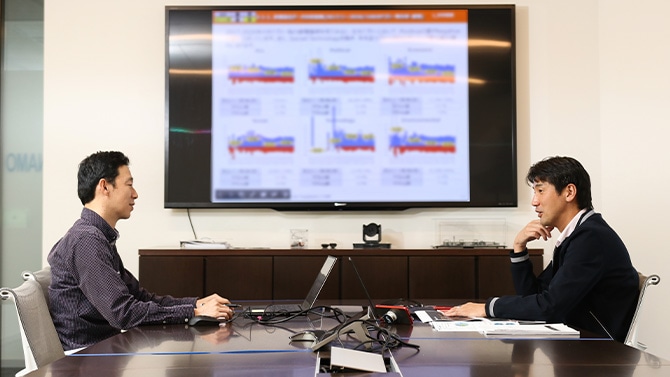
Participants
Naohisa Hayashi
Senior Vice President, Corporate Strategy, Osaka Gas USA Corporation (at the time of the project)
Yohei Kagawa
Vice President, Corporate Strategy, Osaka Gas USA Corporation (at the time of the project)
Kenji Tsuzaki
Vice President, Corporate Department, Osaka Gas USA Corporation
Shimpei Miyoshi
Director, PwC Consulting LLC
Miki Edamoto
Senior Manager, PwC Consulting LLC
This article is based on a dialogue recorded in May 2021, between participants in Tokyo, Osaka and Kagoshima, Japan and Houston, Texas. The recording was conducted with all possible measures in place to prevent the spread of COVID-19.
A project inspired by rapid social changes in the US
Edamoto:
We were first consulted about this project in March 2020, when COVID-19 was spreading globally and concerns about the global economy were rising. Interest in climate change had been increasing due to the potential change of administration and the changing attitudes of younger generations in US society, and I was impressed with your sense of urgency regarding this trend and its potential impact on your business.
Hayashi:
It all started with an issue raised by our company president. In autumn 2019, we were excited about the imminent start-up of the large-scale gas-fired power plant and Freeport project (a liquefied natural gas (LNG) project in which we are participating), as well as further participation in related projects. It was then that, at a meeting to discuss activities for 2020 and beyond, the president made the following comment.
'The world is dynamically changing. What is considered good now may soon become obsolete. What risks do we need to be prepared for? And what should we focus on to foresee the signs of change? We have to face the times from such a perspective.’
Inspired by this statement, I first discussed with Mr. Kagawa what we should try to do first.
Edamoto:
It's about detecting a change and preparing for risk while the business is doing well. I think it is an ideal management philosophy, but it is extremely difficult to realise. How did you deal with this in the beginning?
Kagawa:
We tried to predict the changes that were likely to occur in the future for a certain time frame beginning in the winter of 2019. We discussed what society would look like over the next ten years, and what changes could occur in a three- or five-year span from there, writing our ideas down on a whiteboard. In thinking about society ten years from now, we also looked back at what society was like ten and twenty years ago, and we reaffirmed our understanding that a ten-year period can change the world drastically.
However, at the beginning, we spent hours agonising in front of the whiteboard, not knowing what items to examine, how, and in what depth. So we decided to seek advice from external experts. We approached several consulting firms, but decided to work with PwC Consulting because you understood the differences between the US and Japan in terms of culture, the way people think and the social structure, and assigned to the project a core team member who was on secondment from Japan to Houston.
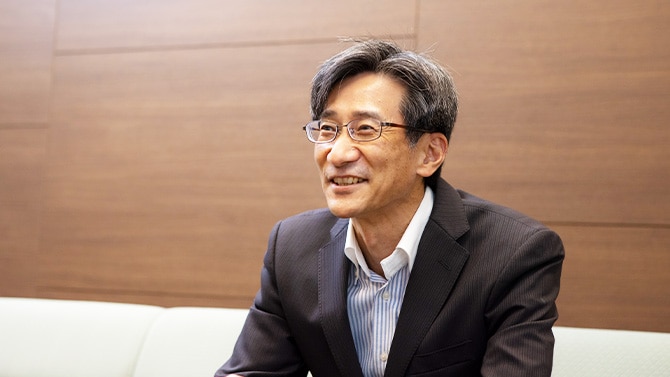
Naohisa Hayashi, Senior Vice President, Corporate Strategy, Osaka Gas USA Corporation (at the time of the project)
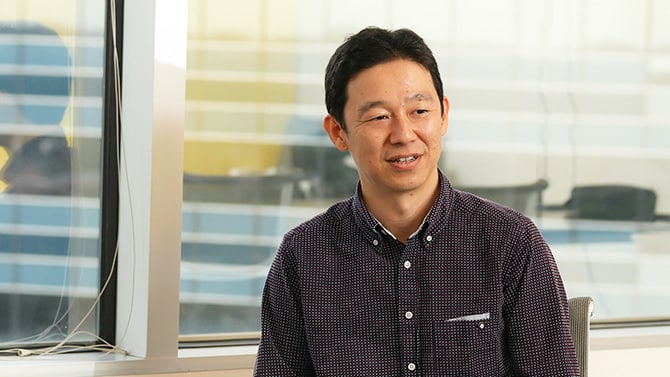
Kenji Tsuzaki, Vice President, Corporate Department, Osaka Gas USA Corporation
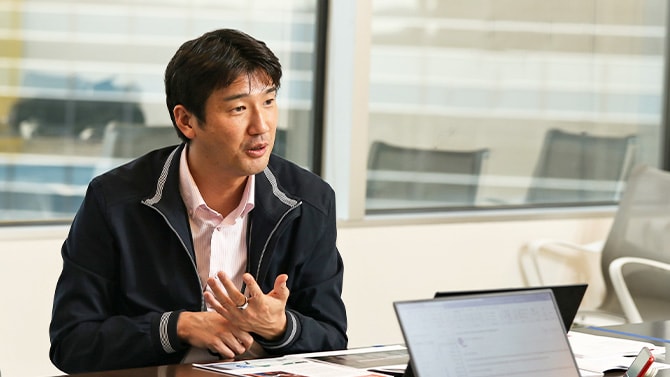
Yohei Kagawa, Vice President, Corporate Strategy, Osaka Gas USA Corporation (at the time of the project)
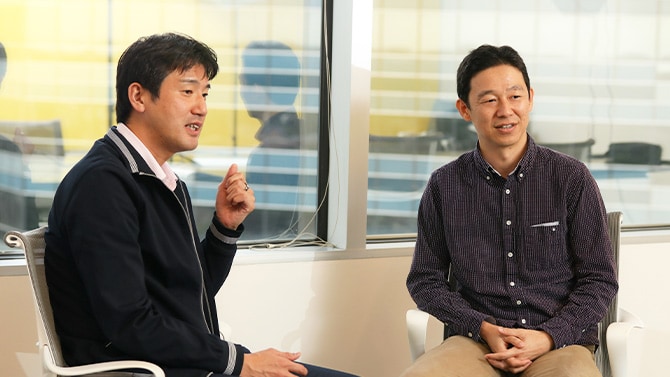
Embodying potential risks to realise an ideal future
Edamoto:
That whiteboard showed how much you struggled with the work. While looking at it, I had two thoughts: first, that it was no longer possible to ascertain disruptive changes with traditional forecasting and analytical thinking; and second, that when predicting the future of the US from a Japanese perspective, it could be useful to interview local experts to quickly verify whether the direction and path of your predictions were correct, as there is no right answer when it comes to the future. I thought if we could address these issues, it would help us move forward.
We therefore made a proposal based on PwC Consulting's proprietary future-creating methodology, Speculative Future Design. From a human-centric perspective, we listen to the client's ideas about a ‘potential future’, which goes beyond a mere extension of existing businesses. By starting with a potential future and using our back-casting methodology, we organise what kind of studies and actions are necessary now. We conducted a short, intensive workshop for the project members from OGUSA Houston and Silicon Valley, created stories and videos that specifically showed the future around 2040, and set key risk indicators (KRIs) as risk factors that should be monitored in the future.
Hayashi:
It was interesting to see how the video expressed a future scenario that could not have been dreamed up simply by imagining an extension of the current situation.
Kagawa:
The workshop was held in a remote environment, connecting Japan in the early morning with the US in the evening. As we were in the US, we attended the workshop right after our regular work was finished and were exposed to a large amount of diverse information on future design. I remember how difficult it was to attune our minds to this.
At times I felt distressed about how to understand the gap between the future story and reality and how to bridge it, but finally I learnt that it is also important to rely on intuition rather than logic in order to be aware of and overcome disruptive changes.
Edamoto:
Relying on intuition means throwing away preconceived ideas. I’m glad to hear that you’ve recognised some very important factors for project success. In your interviews with local experts, you asked professionals in the Texas electricity, oil and gas industry, including professionals from the millennial generation, for their opinions.
Kagawa:
I heard from some members of the younger generation who work for one of the major energy companies that they were concerned about their reputation—for example, whether engaging in work related to fossil fuels would damage their careers and relationships with others. It made me realise that climate change is perceived as a serious and pressing issue for the younger generation. I tend to look at environmental policy from an economic perspective as well, but this led me to question whether there is a big gap between generations in terms of awareness and action on the climate change issue.
Edamoto:
It was also a great experience for us to realise that millennials’ awareness of and actions related to climate change were greater than we expected, and are a critical factor in the creation of a new movement.
Kagawa:
I also got the impression that in the US, where there is a large demographic of young people, their awareness and actions can become a strong driver for change. During the workshop, there were many opportunities to see signs of change, such as the global attention on environmental activist Greta Thunberg, the expansion of the Black Lives Matter movement through social networking services, and the increasing number of electric vehicles (EVs) seen around the city. Against this background, we decided to use the KRIs we had set up to accelerate our capability to respond, but we were faced with a new challenge here.
Using AI to collect and analyse vast amounts of data on social media
Edamoto:
Since you set up a wide range of monitoring items as risk predictors for the future, you needed to keep up with a huge amount of diverse data, and you weren’t sure how to collect and analyse it.
Kagawa:
Yes, we developed the KRIs based on public historical data, but there were many different types of data—monthly, annual and quarterly—which required a vast amount of time to collect. And in many cases, we were unable to obtain meaningful analysis results. Furthermore, data on social trends and technical information was difficult to collect in the first place, and we wondered early on whether we could use the KRIs for business strategy formulation. Therefore, with the support of Mr. Tsuzaki, we considered using digital technologies such as AI and robotic process automation (RPA), which we had been interested in for some time, to conduct advanced information collection and analysis, including information on social conditions and trends, and to thus develop sustainable business strategies.
Edamoto:
This is where PwC Consulting’s Data & Analytics team comes in. Could we use advanced technologies to quantitatively capture unstructured data (public opinion)? Could we correlate and analyse this data with structured data (facts) to identify leading indicators that could increase the momentum for decarbonisation? These two factors, in Mr. Miyoshi’s opinion, were the key to the success of the project.
Miyoshi:
Yes. We first focused on using social media to quantify public opinion; the opinions people post on social media are flooding the internet in the form of unstructured data (text). It has been almost impossible for humans to check these posts one by one and gain an understanding of tendencies and trends over time. However, if natural language processing (text analysis), one type of AI technology, can be used to analyse and process the text in the same way as numerical data, we can dramatically increase the quantity and quality of the information that can be used for decision-making. This technology is being increasingly used by many businesses to understand public trends as part of their marketing activities and to analyse the response to their brands, products and services.
Edamoto:
In discussing how to effectively use the KRIs, what particularly impressed me was Mr. Miyoshi’s analysis approach.
Miyoshi:
When you are used to a style of analysis that compares predictions with actual results, experience can make you unconsciously think that narrowing the scope of data for analysis can make your analysis more efficient. However, by doing so, you actually decrease the possibility of identifying new insights and realisations. Instead of humans arbitrarily setting priorities, it’s better to input all the possible data and let machines analyse it, while the humans interpret the results to get insights. In some cases, you can also feed in additional data and perform re-analysis. I emphasised the importance of repeating this cycle.
Edamoto:
Humans have preconceptions. Based on those, we tend to adopt business and decision-making methods that are within our comfort zones, but I realised that using digital tools through the process of trial and error can help us more effectively pursue all possibilities.
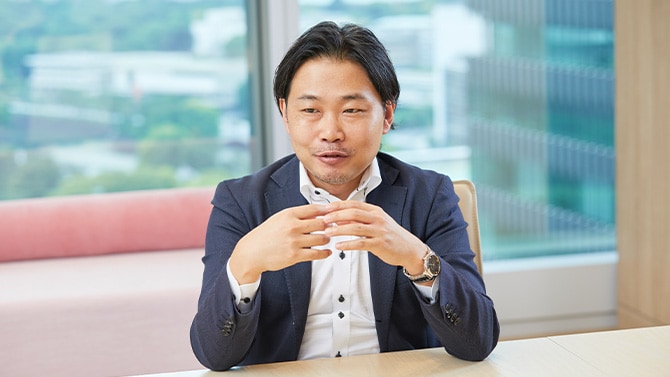
Shimpei Miyoshi, Director, PwC Consulting LLC
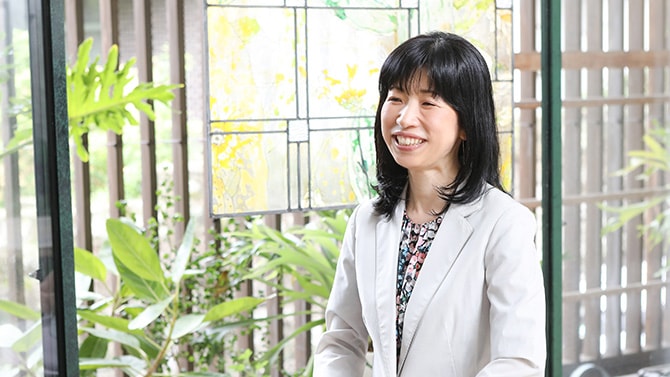
Miki Edamoto, Senior Manager, PwC Consulting LLC
Participant profile
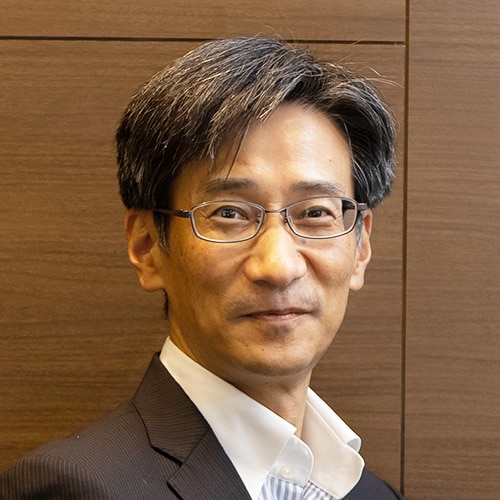
Naohisa Hayashi
Senior Vice President, Corporate Strategy, Osaka Gas USA Corporation (at the time of the project)
Naohisa Hayashi joined Osaka Gas Co., Ltd. in 1993. After working in the Pipeline Business Unit, HR, the secretariat and the Residential Energy Business Unit, he was seconded to Osaka Gas USA in 2018. He is currently in charge of HR and general affairs, corporate strategy, IT, accounting and finance and risk management.
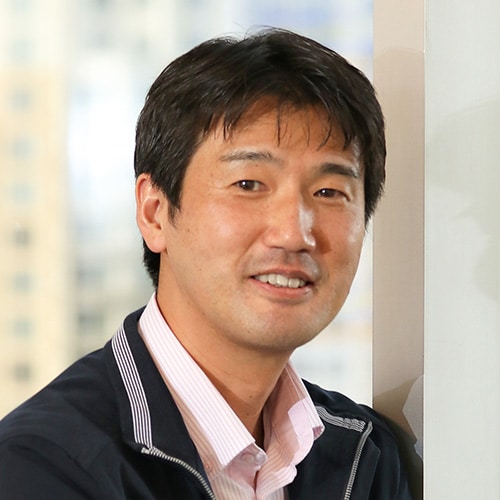
Yohei Kagawa
Vice President, Corporate Strategy, Osaka Gas USA Corporation (at the time of the project)
Yohei Kagawa joined Osaka Gas Co., Ltd. in 2000. After working in the Residential Energy Business Unit, corporate planning, IR and overseas planning, he was seconded to Osaka Gas USA in 2018. He is currently involved in planning work, organisational issues, cross-sectional activities and promotion of digitalisation.
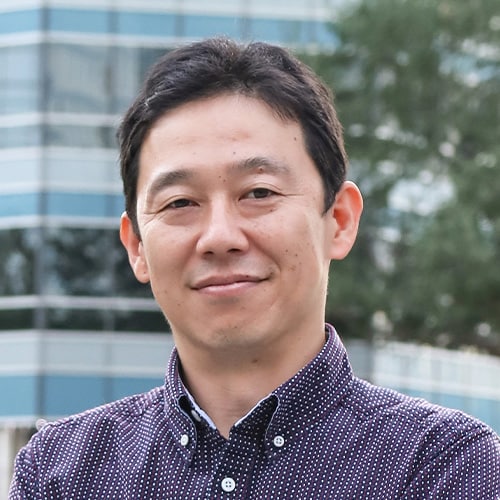
Kenji Tsuzaki
Vice President, Corporate Department, Osaka Gas USA Corporation
Kenji Tsuzaki joined Osaka Gas Co., Ltd. in 2004. In the Information/Communication Systems Department, he was in charge of driving operational improvements using financial engineering and mathematical optimisation techniques. In 2016, he was seconded to Osaka Gas USA. He is currently engaged in establishing the commodity trading platform, as well as risk management operations.
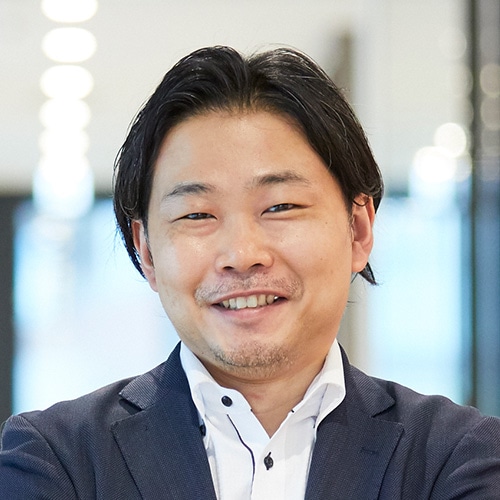
Shimpei Miyoshi
Director, PwC Consulting LLC
Prior to joining PwC Consulting, Shimpei Miyoshi worked for a major Japanese automotive manufacturer and a foreign-headquartered system instrumentation analytics vendor.
While working in production management and corporate planning at these companies, he gained experience in leading data analytics utilisation projects in a variety of industries and for a variety of business issues. At PwC Consulting he has been involved in a number of artificial intelligence (AI) and machine learning projects covering stages from conceptualisation for use in business, to PoC testing and standardisation.
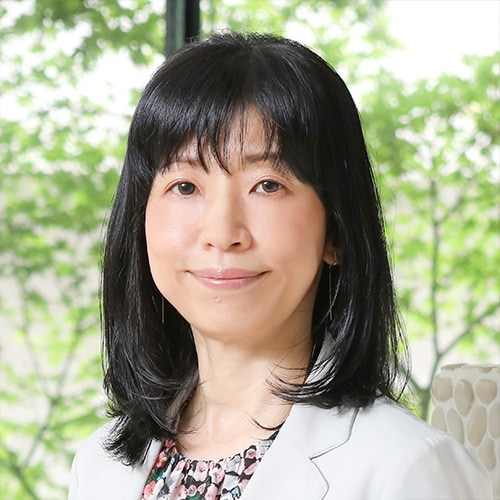
Miki Edamoto
Senior Manager, PwC Consulting LLC
Prior to joining PwC Consulting, Miki Edamoto worked for a Japanese electronics manufacturer. In the overseas sales department, she was engaged in operational reforms and new business development, and led an enterprise resource planning system implementation project. After joining PwC Consulting, she was initially involved in business process reengineering (BPR) and global SAP implementation projects. Recently she has been involved in a number of projects which focus on future-oriented new business development mainly for clients in the oil and gas industry and the electric power industry.
In July 2016, she was seconded to the Houston, Texas office of PwC US for two years to support the global operations of Japanese companies and their affiliates, including Osaka Gas USA.
* Company names, job titles, interview contents etc. are current as of the time of publication.
Our team
Miki Edamoto
Director, PwC Consulting LLC




